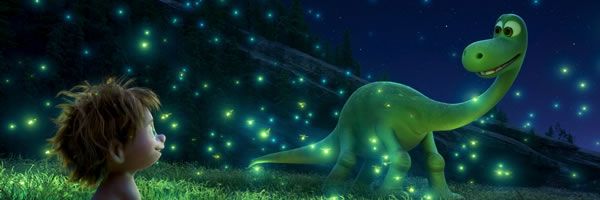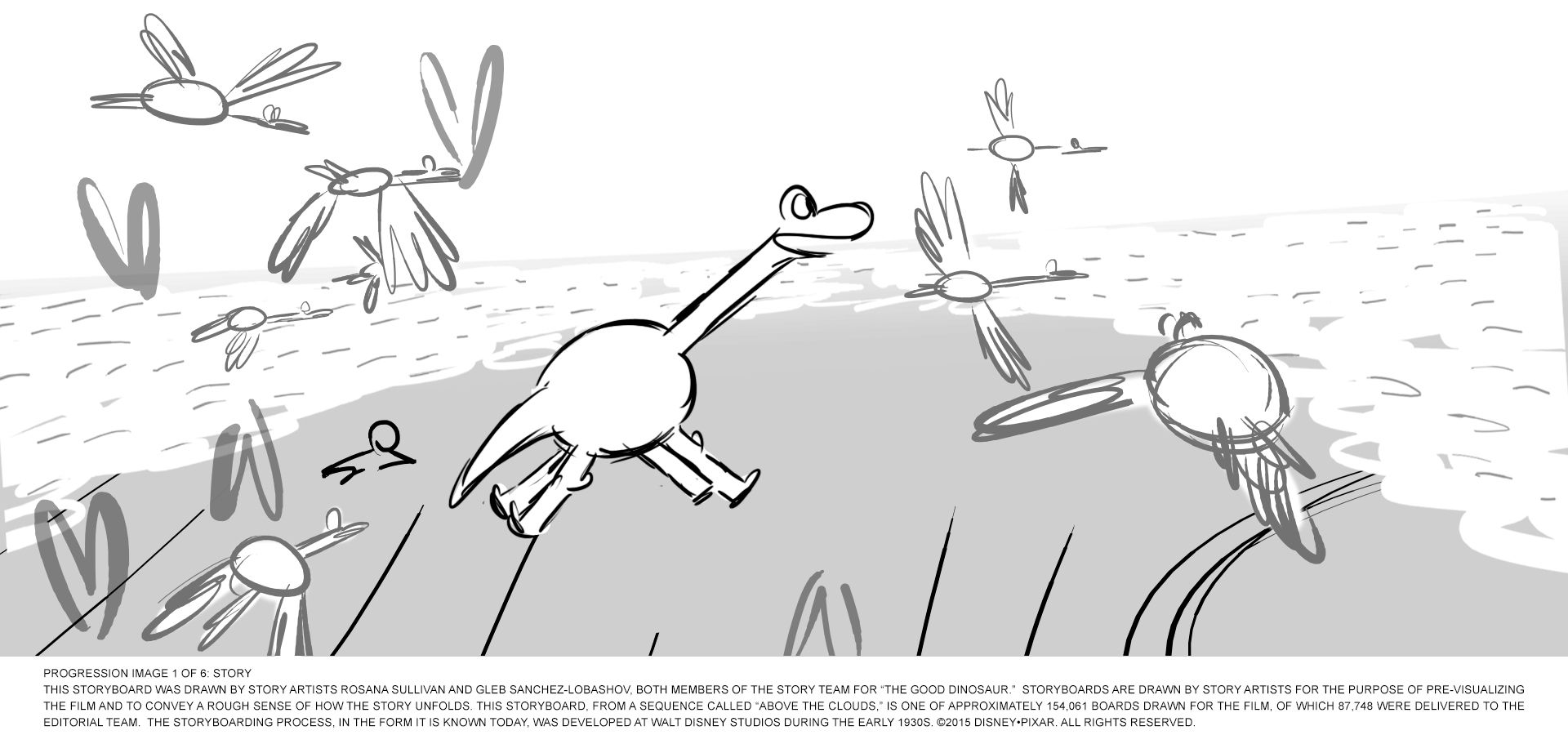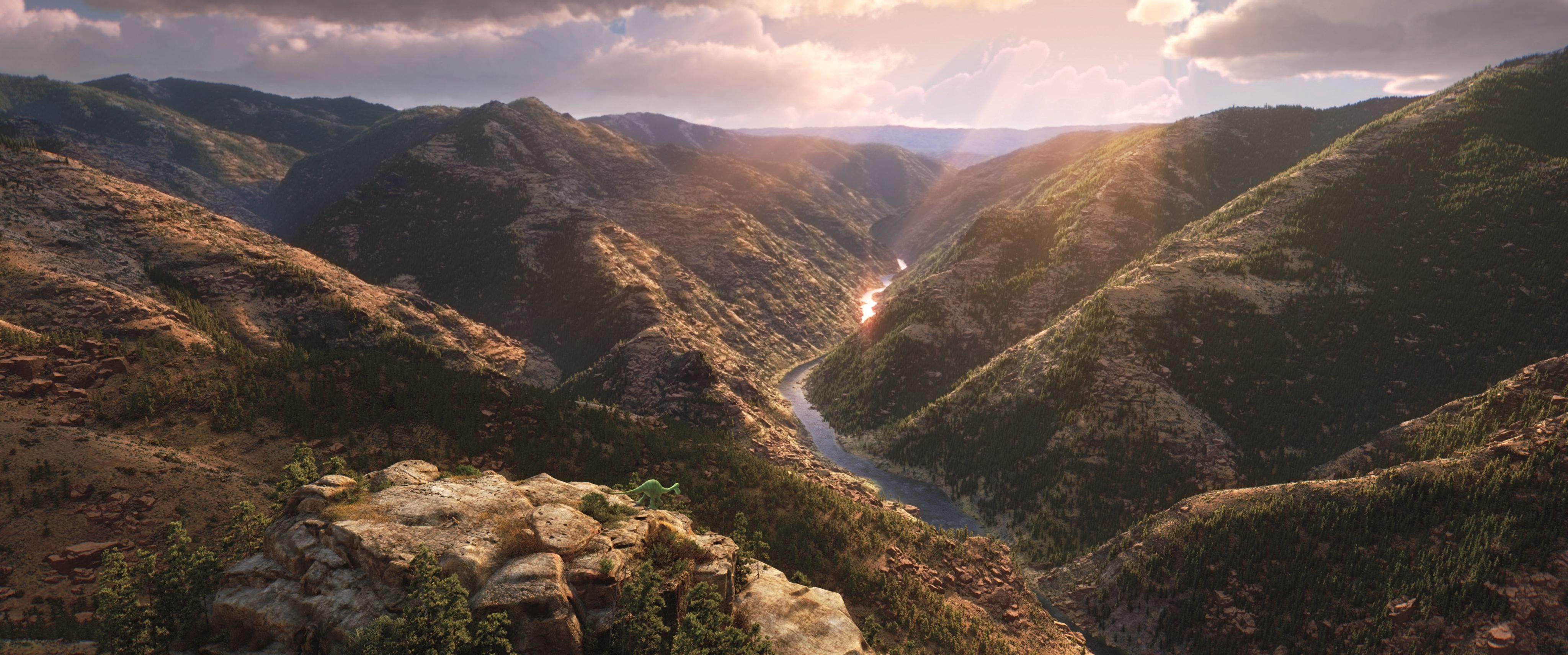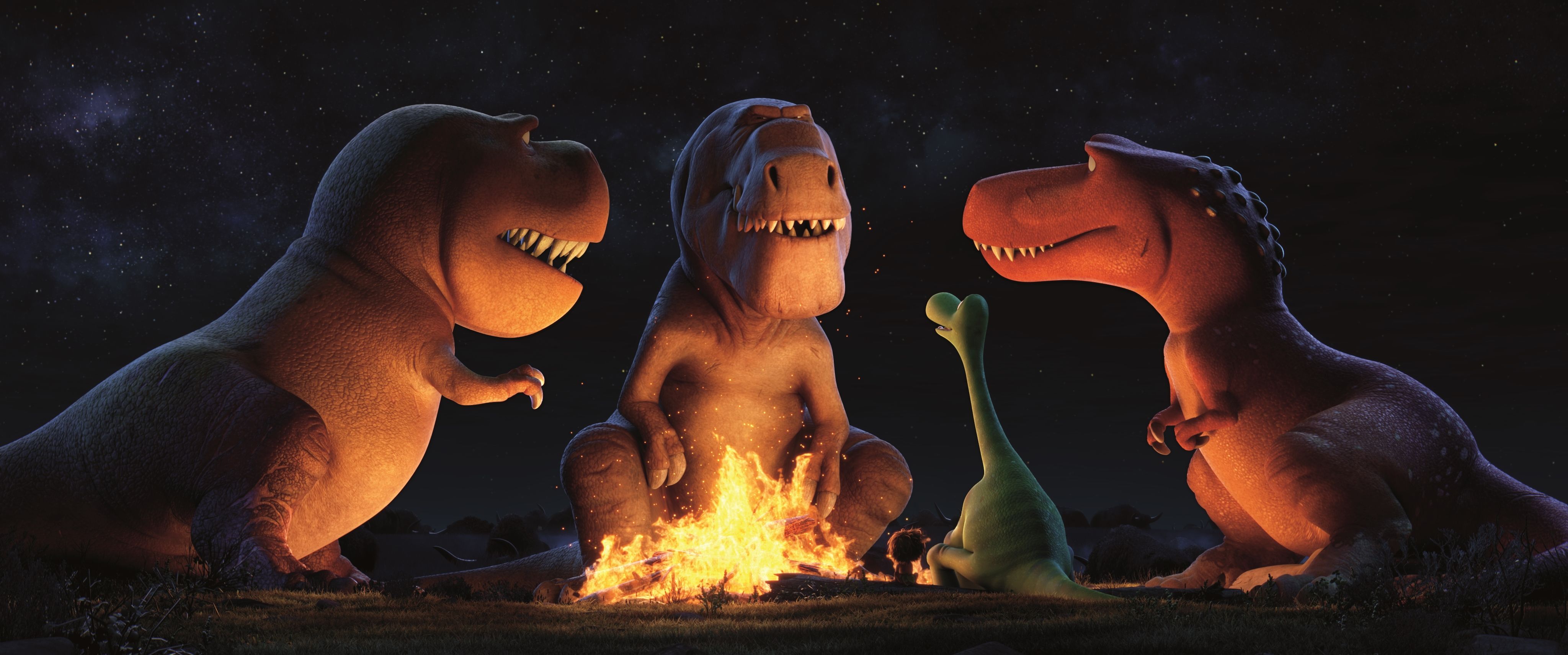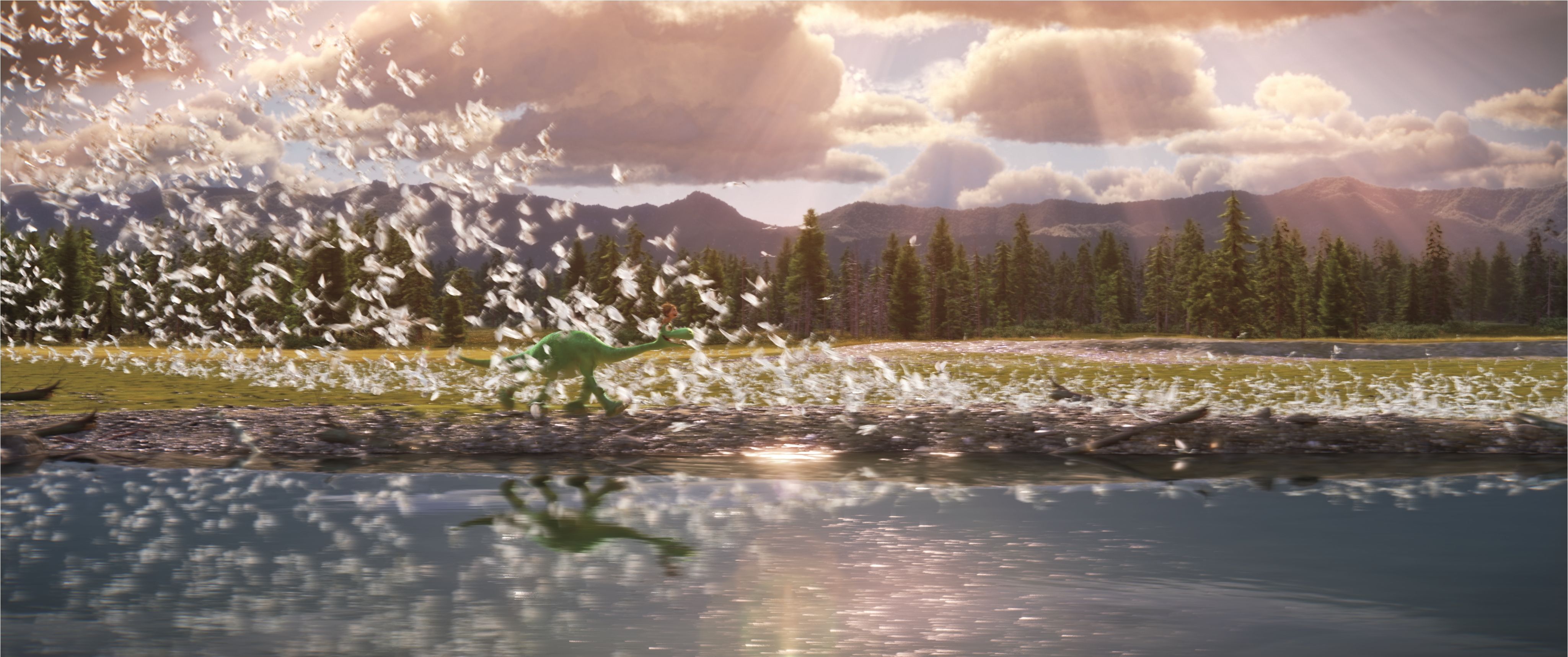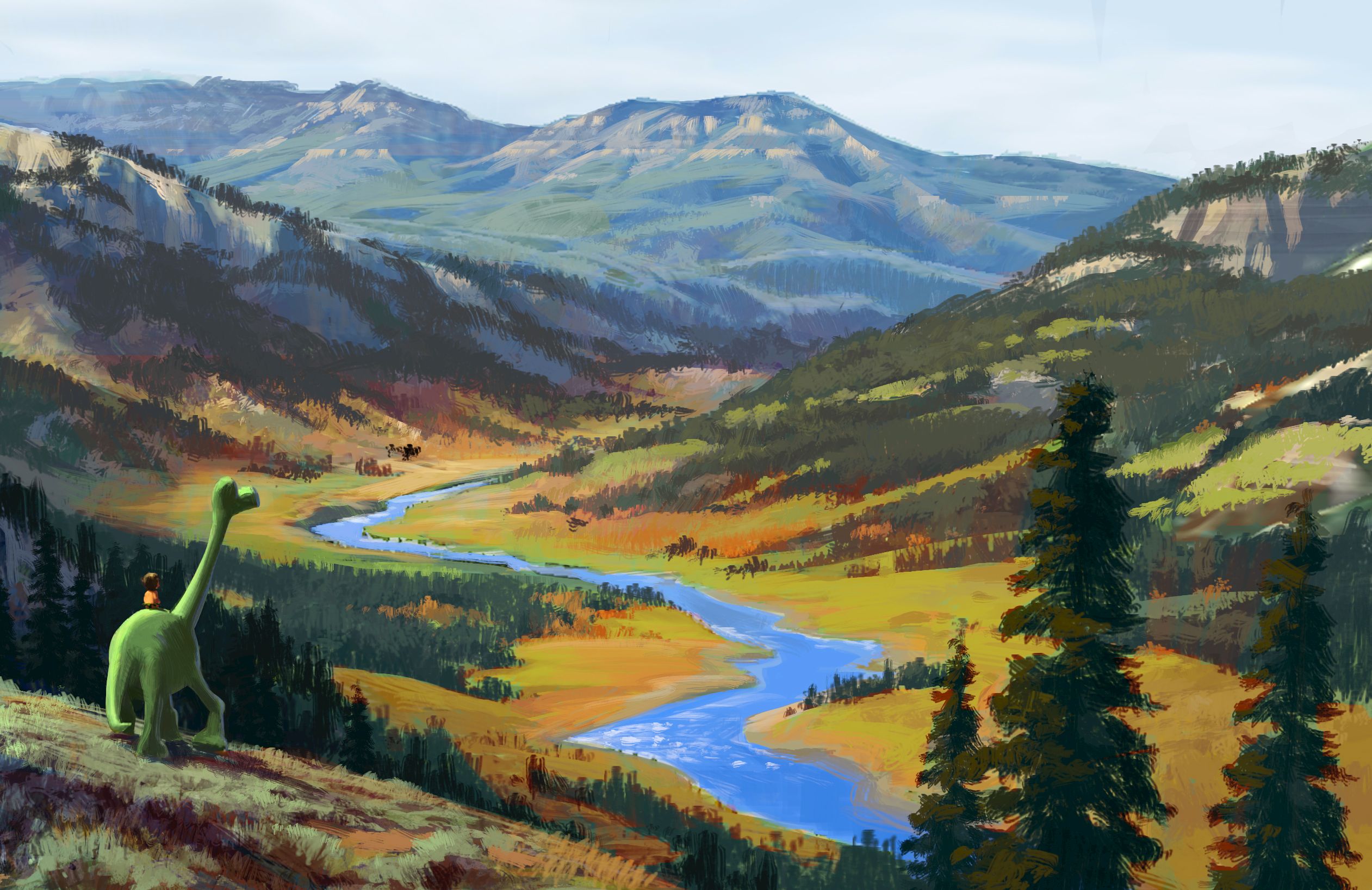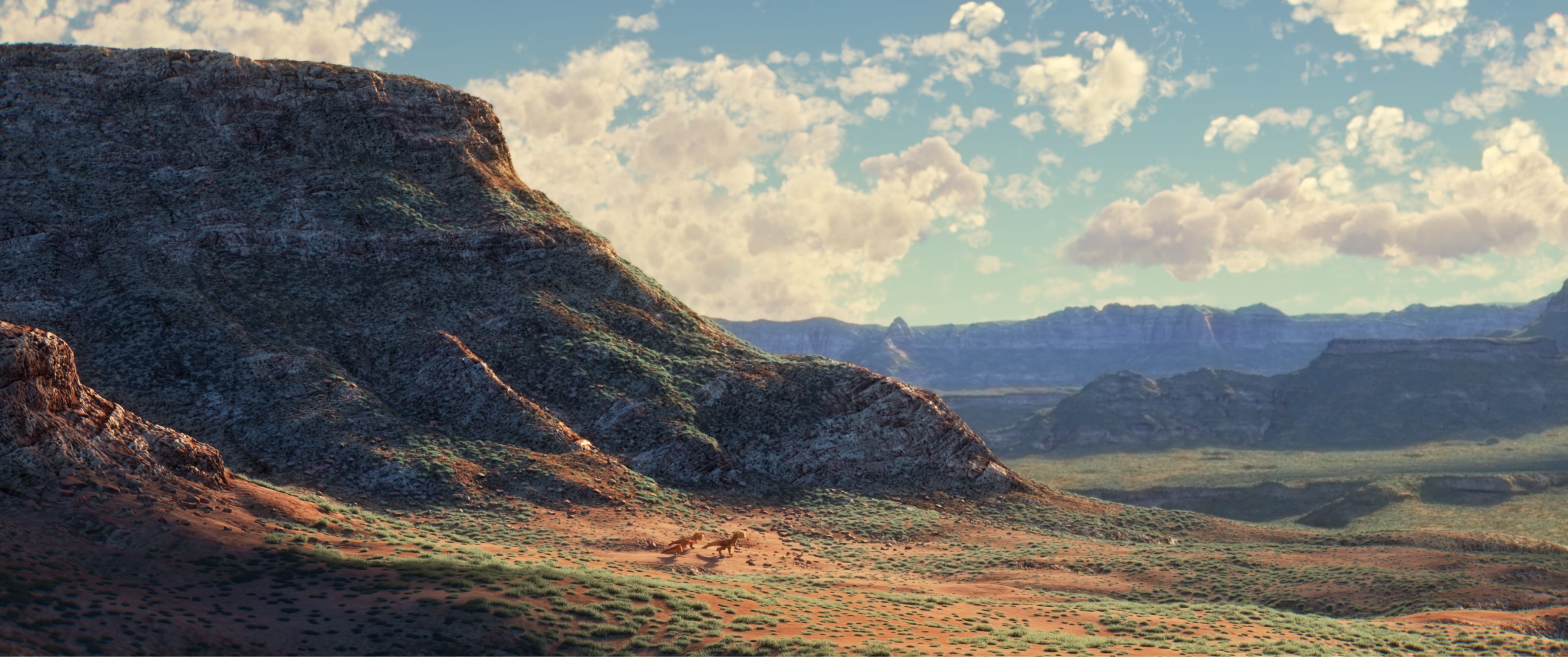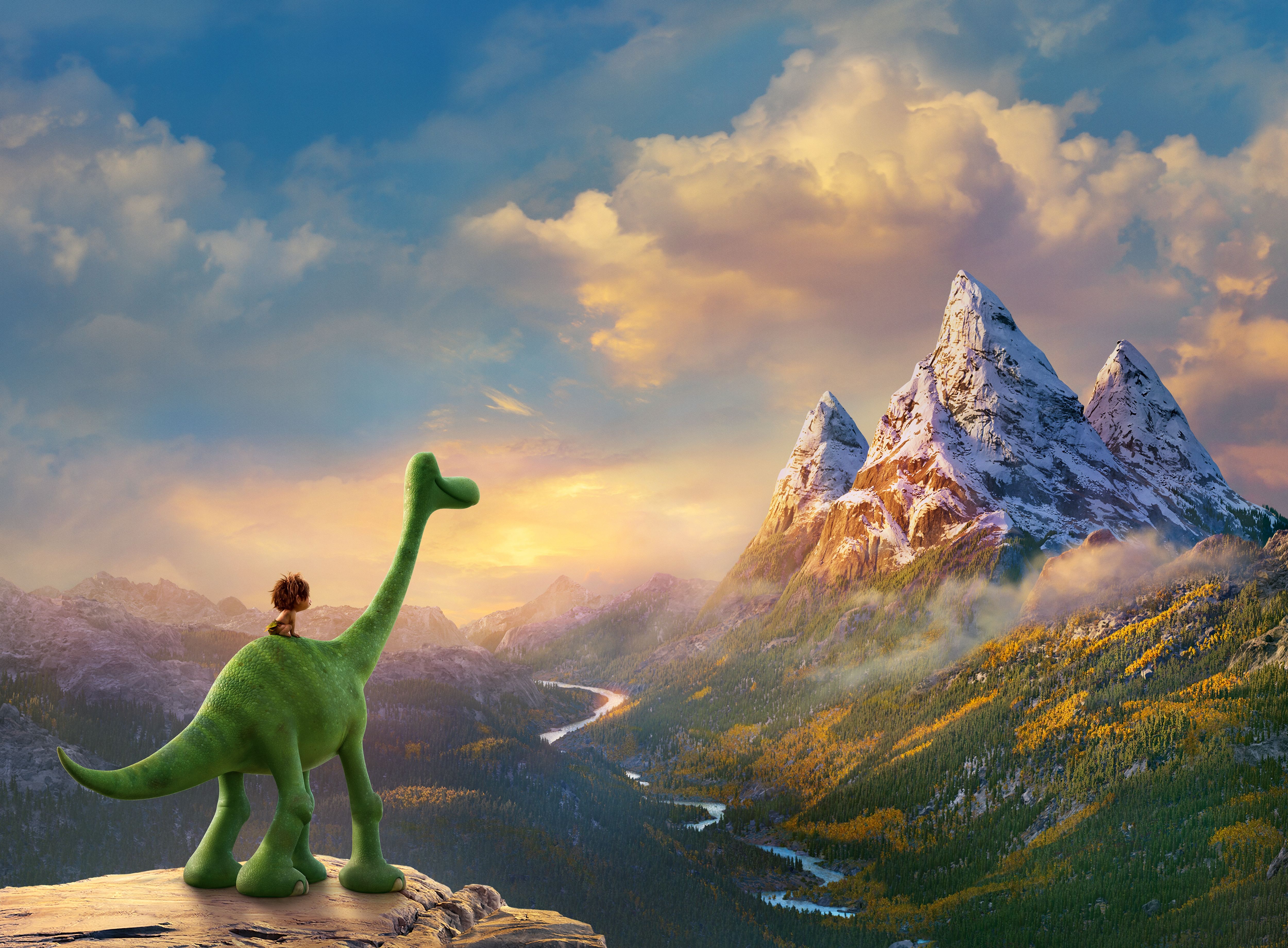A few weeks ago, I wrote about the half hour of The Good Dinosaur footage I saw when I visited Pixar. I came away feeling ambivalent. On the one hand, the movie looks like it will deliver on the emotional beats, especially since it’s a “boy and his dog” story, but the cartoony animations set against the realistic backgrounds created an odd dissonance for me.
However, it also made me eager to learn more, and the day after the footage presentation, I went back to Pixar with a group of fellow movie journalists to learn about the making of the film. Our tour was broken down into the various departments, and I’ve presented the things you should know from each one.
Screenwriter Meg LeFauve & Story Supervisor Kelsey Mann
- They like to treat the story room as a “safe environment”, especially since it involves taking aspects from their own lives and putting it into their film.
- They pitch on storyboards just like animators have done for decades, but they use a special hardware and software that cuts it together more like a movie and also allows them to make changes on the fly.
- This bullpen environment also allows them to see what’s happening in other scenes.
- Pitching is a performance. When pitching a scene to the other artists and to director Peter Sohn, the pitcher will employ voices, sound effects, and sometimes even play music to bring the scene to life.
- For Good Dinosaur, they employed screenwriting techniques like cards, characters, and color coordination so they could track each character’s emotional journey.
- There’s also a process of casting the storyboard artist, i.e. “Who knows comedy?” and having that person tackle particular scenes.
Set Supervisor David Munier
- They “wanted the environment to be another character,” says Munier.
- This meant wanting to put the camera anywhere, light everything even if some shots were 50 miles away or more.
- Previously, Pixar films would use matte paintings for their landscapes.
- However, one of the film’s technological masterstrokes was taking the U.S. Geological Survey data for the Grand Tetons and using it as the basis for their landscape.
- Tried to reproduce Ansel Adams’ 1942 photos of the Tetons and came close.
- They wanted to be able to move the camera everywhere, and they eventually covered 13,600 square miles.
- When designing the landscape, they wanted to make sure that Arlo’s home of Clawtooth Mountain looked distinct from the rest of the mountains.
- Previously, when they did clouds, they had to paint them, but this time they have volumetric clouds thanks to visual effects that offer 30 different cloud types.
Animators Kevin O’Hara and Rob Thomas
- In trying to figure out how to animate a dinosaur, they went to the zoo and looked at elephants. They studied weight, behavior, and locomotion.
- Quadrupeds are intimidating because there’s so much to manage.
- Arlo is a little taller than an elephant.
- They learned that locomotion is all about efficiency, and the surprisingly graceful rhythm between the head and the hips.
- To give you an idea of how long animation takes, it will take four to five days just to map out the blocking (getting a character from point A to point B) and all the options and choices that entails. For the example the showed us, they noted that during the process, they decided to have Arlo stumble a bit. All told, it took a week and a half just to complete just a few brief seconds of animation, and the final version that’s full completed takes two months.
- However, they weren’t completely tied to realistic motions. When it came to the T-Rexes, they wanted the movement to look like a biped riding on horseback. They watched a ton of Jurassic Park, especially in trying to get a good sense of dinosaur weight.
Visual Effects Supervisor Jon Reisch
- The river was a huge challenge because water is always difficult, and in the story, the river is how Arlo finds his way home; it also mirrors his emotional state.
- There are also minor things to consider, like how does water interact with sand. But ultimately, that tangibility is necessary because it helps the storytelling by heightening the mood and drama. For example, the fog in the film adds a mood of suspends, and there are over 400 shots of rain.
- The film required 300 TB for the effects; the river alone took 17 TB, which was bigger than all of Cars 2.
- They use simulation software for how physics will behave. For example, they use it if they want to figure out the mass, drag, and interactions for grains of sand. It also helps with the accumulation of moisture.
- Additionally, they keep an eye to how lighting interacts with the visual effects.
- The software engineers and visual artists keep in communication so they can identify challenges like Arlo in the river—he’s a creature thrashing about in a gigantic visual effect, but it’s a set piece that has to be done right, especially since it’s such a pivotal point in the movie.
- Another key task for the visual effects team was making Arlo feel dwarfed by his surroundings, and turning nature into the antagonist.
- They were able to expand the river by redressing, so rather than creating one long stretch of river, they just took a shorter part of the river and made it look different by adding certain elements like vegetation, rocks, etc.
Production Designer Harley Jessup
- They were inspired by both the red desert and the grasslands. They also looked at waterfalls, geysers, steam vents, and hot springs.
- They wanted “boldly stylized” characters.
- Greg Dykstra (Up) sculpted the T-Rex butch. They did a rough metal armature, rough it out in clay, and then finish up with a more polished version.
- The design for Spot was inspired by dogs (not too surprising since Spot, is the dog in the “boy and his dog” relationship even though he’s a six-year-old boy).
- The homestead was inspired by actual homesteads from the frontier in the 1800s; however, they kept in mind that the characters don’t have opposable thumbs, do they didn’t want to do those kinds of buildings. Instead, they designed a structure that was reliant on pushing and pulling.
- The film takes place from spring to autumn.
- A full-scale Arlo is a 18-feet tall.
Director of Photography – Lighting: Sharon Calahan
- Influences include The Black Stallion, Never Cry Wolf, and Seven Years in Tibet.
- Wanted frontier films that narrated with imagery like Dances with Wolves, Shane, and Seraphim Falls.
- They also wanted to show the hardscrabble existence of the frontier.
- Took three research trips, and went to great lengths to understand the various flora and fauna.
- The characters were designed to be appealing; the world was designed to be appealing. “The characters really pop in that environment,” says Calahan.
- She also wanted “painterly realism”, which meant going for clumping rather than even dispersal, and making sure that light and shade were a major design element.
- Biggest challenges were set extension, skies and weather, and the river.
Closing Thoughts
Even if I still have mixed feelings about The Good Dinosaur based on what I’ve seen so far, it’s impossible to look at the amount of work that went into making it and not feel floored. Pixar isn’t resting on their laurels with this one, and while the “boy and his dog” story may be universal and enjoyable, from a technical level, this movie is going to take them to new heights. Visually, this film is going to be a marvel, and I was so grateful to see how that marvel was made.
Come back later this week for my interviews with director Peter Sohn, producer Denise Ream, screenwriter Meg LeFauve, and Story Supervisor Kelsey Mann.
The Good Dinosaur opens November 25th.

